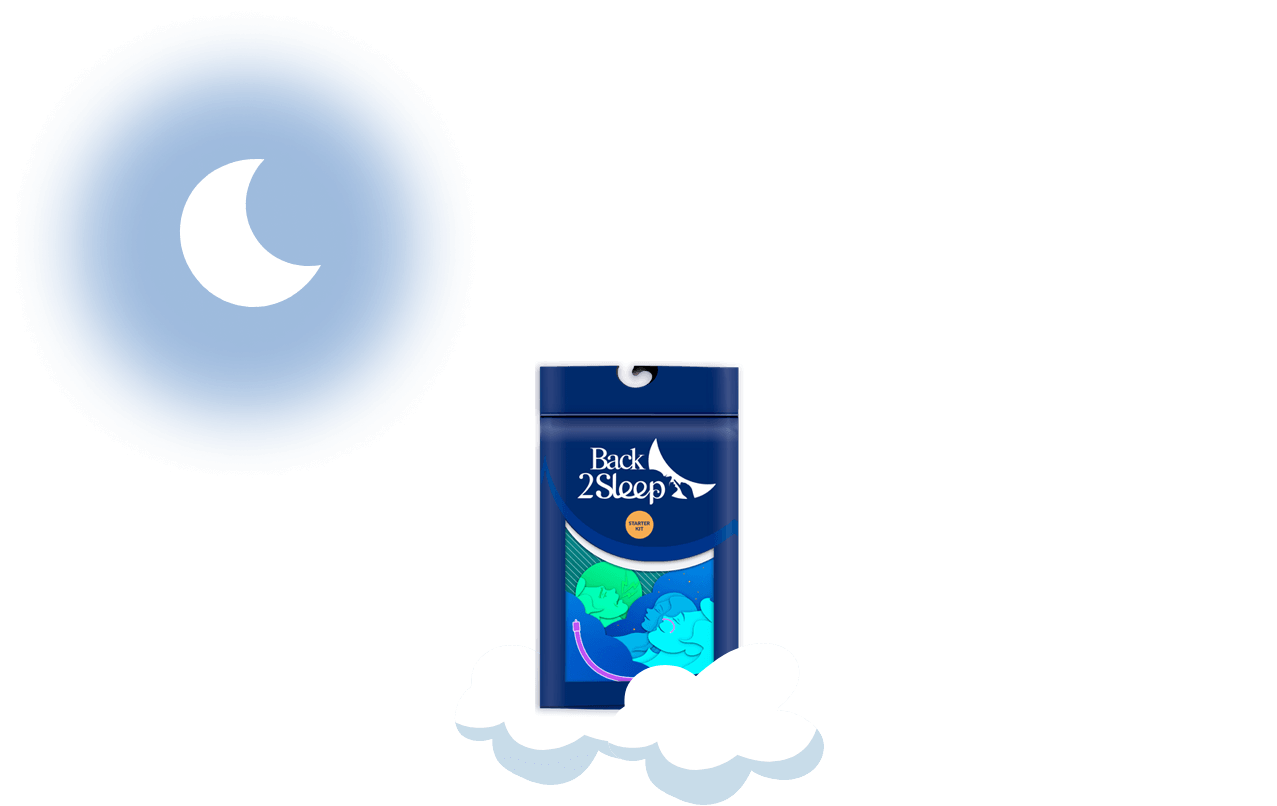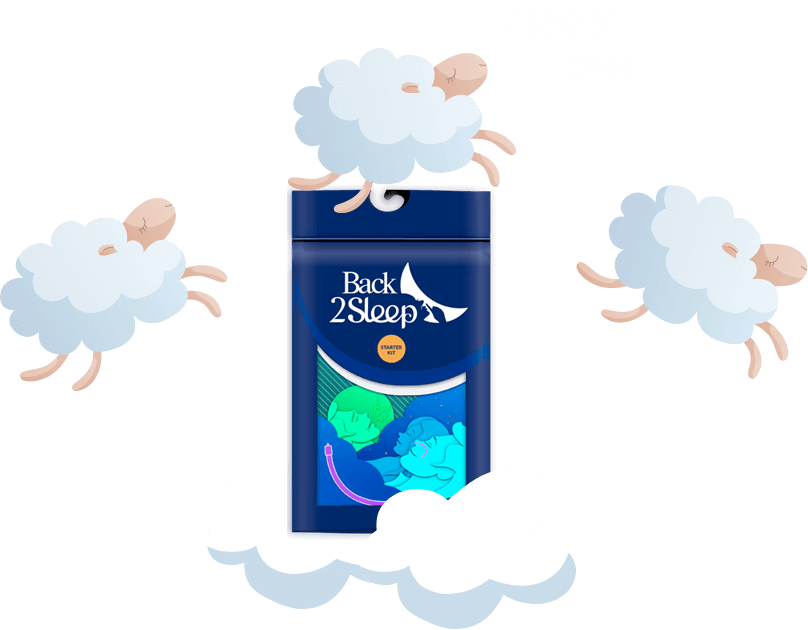Hypertrofische Rhinitis: Complete Gids voor Behandeling & Verlichting
Ontdek hoe hypertrofische rhinitis ernstige neusverstopping veroorzaakt door ontsteking, wat de ademhalingskwaliteit en het dagelijks leven beïnvloedt, plus innovatieve oplossingen zoals de Back2Sleep intranasale orthese voor directe verlichting.
Hypertrofische rhinitis is niet zomaar een verstopte neus, het is een ernstige medische aandoening waarbij ontsteking van het neusslijmvlies zorgt voor een duidelijke neusverstopping, vaak aan één kant maar dit kan variëren - in tegenstelling tot allergische of infectieuze rhinitis die worden veroorzaakt door allergenen of infecties, wordt hypertrofische rhinitis gekenmerkt door aanhoudende congestie die de kwaliteit van leven sterk kan beïnvloeden, met symptomen zoals moeite met ademhalen door de neus, frequente niesbuien en soms verlies van reuk, daarom bieden innovatieve oplossingen zoals de Back2Sleep intranasale orthese cruciale verlichting door een adequate neusademhaling te behouden.

In tegenstelling tot allergische rhinitis of infectieuze rhinitis, die kunnen worden veroorzaakt door allergenen of infecties, wordt hypertrofische rhinitis gekenmerkt door aanhoudende congestie die de kwaliteit van leven sterk kan beïnvloeden.
Symptomen zijn onder andere:
- 💊 moeite met ademhalen door de neus
- 💊 frequente niesbuien
- 💊 soms verlies van reuk
Deze aandoening kan verergerd worden door factoren zoals:
- 💊 vervuiling
- 💊 overmatig gebruik van neussprays
Essentiële informatie over hypertrofische rhinitis
| Belangrijke punten | Samenvatting |
|---|---|
| Hypertrofische Rhinitis | Een ernstige medische aandoening gekenmerkt door ontsteking van het neusslijmvlies die aanzienlijke obstructie veroorzaakt. |
| Symptomen | Moeite met ademhalen, veelvuldig niezen, verlies van reuk, hoofdpijn, verandering van smaak. |
| Oorzaken | Vervuiling, overmatig gebruik van neussprays, fysiologische omstandigheden zoals zwangerschap, ademhalingspathologieën zoals astma. |
| Behandeling | Antihistaminica, nasale corticosteroïden, decongestiva, chirurgische ingrepen, Back2Sleep intranasale orthese. |
| Leven met Hypertrofische Rhinitis | Behoud een goede neus hygiëne, beheer allergenen, raadpleeg regelmatig een KNO-arts, pas de levensstijl aan. |
Wat zijn de symptomen van hypertrofische rhinitis?
Neusverstopping
Het meest opvallende symptoom van hypertrofische rhinitis is neusverstopping, die kan zijn:
- 💊 bilateraal (beide neusgaten aangedaan)
- 💊 unilateraal (alleen één neusgat aangedaan)
Deze obstructie maakt het moeilijk om door de neus te ademen, waardoor mensen vaak door de mond moeten ademen, wat kan leiden tot andere complicaties zoals een droge mond.
Loopneus en rhinorroe
Neusafscheiding, vaak gepaard met slijm, is gebruikelijk. De rhinorroe of neusafscheiding kan helder of purulent zijn, afhankelijk van de onderliggende infectie, en draagt bij aan algemeen ongemak.
Veelvuldig Niezen
Niesaanvallen zijn een irriterende reactie van de neusholtes, verergerd door ontsteking van het neusslijmvlies. Deze niesbuien kunnen met wisselende frequentie en intensiteit voorkomen, vaak onvoorspelbaar.
Jeukende Neus en Ogen
Jeuk in de neus en rond de ogen is gebruikelijk, vooral als hypertrofische rhinitis gerelateerd is aan een allergie. Deze jeuk kan gepaard gaan met tranende en rode ogen, wat het ongemak vergroot.
Hoofdpijn en Migraine
Hoofdpijn en migraine kunnen optreden als gevolg van de constante druk veroorzaakt door neusverstopping. Deze pijn is vaak gelokaliseerd rond de sinussen en kan verergeren bij houdingsveranderingen of 's nachts.
Aangetaste Smaak- en Reukzin
Ontsteking en obstructie van de neusholtes kunnen leiden tot een vermindering of verlies van de reukzin (anosmie), wat ook de smaakzin beïnvloedt. Dit kan de eetlust verminderen en de levenskwaliteit aantasten.
Complicaties zoals Faryngitis of Laryngitis
In het geval van infectieuze rhinitis kunnen complicaties zoals faryngitis of laryngitis optreden, vaak gepaard gaand met koorts en een gevoel van algemene malaise.
Leer Over Gerelateerde AandoeningenWat Zijn de Oorzaken van Hypertrofische Rhinitis?
Vervuiling & Irritanten
Luchtvervuiling, met name uitlaatgassen en industriële dampen, kan het neusslijmvlies irriteren en bijdragen aan chronische ontsteking. Tabaksrook is een krachtige irriterende stof.
Overmatig Gebruik van Neusspray
Langdurig gebruik van neussprays met vasoconstrictoren kan leiden tot rhinitis medicamentosa, bekend als rebound rhinitis.
Fysiologische Condities
Bepaalde aandoeningen zoals zwangerschap kunnen predisponeren voor hypertrofische rhinitis. Hormonale veranderingen verhogen de ontsteking van het neusslijmvlies.
Ademhalingspathologieën
Aandoeningen zoals astma en taaislijmziekte kunnen een aanleg geven voor hypertrofische rhinitis door de ontstekingsstatus van de neusholtes te beïnvloeden.

Inzicht in Omgevings- en Medische Triggers

Vervuiling en Omgevingsirriterende Stoffen
Luchtvervuiling, met name uitlaatgassen en industriële dampen, kan het neusslijmvlies irriteren en bijdragen aan chronische ontsteking van de neusschelpen. Evenzo is tabaksrook een krachtige irriterende stof die hypertrofische rhinitis kan verergeren of veroorzaken.
Overmatig Gebruik van Decongestieve Neussprays
Langdurig gebruik van neussprays met vasoconstrictoren kan leiden tot rhinitis medicamentosa, wat de ontsteking van het neusslijmvlies verergert en bijdraagt aan hypertrofische rhinitis. Dit fenomeen staat bekend als rebound rhinitis.
Bijzondere Fysiologische Condities
Bepaalde fysiologische omstandigheden, zoals zwangerschap, kunnen een aanleg geven voor hypertrofische rhinitis. Tijdens de zwangerschap kunnen hormonale veranderingen de neiging van het neusslijmvlies tot ontsteking vergroten, wat leidt tot frequentere neusverstopping.
Geassocieerde Luchtwegpathologieën
Aandoeningen zoals:
- 💊 astma
- 💊 taaislijmziekte
Ze kunnen ook een aanleg geven voor hypertrofische rhinitis. Deze chronische luchtwegpathologieën kunnen de ontstekingsstatus van de neusholtes beïnvloeden en verergeren.
Wat Zijn de Behandelopties voor Hypertrofische Rhinitis?
Medische Behandeling
Medische behandeling is vaak de eerste verdedigingslinie tegen hypertrofische rhinitis. Dit kan omvatten: 💊 antihistaminica om allergische reacties te verminderen, 💊 neus corticosteroïden om ontsteking van het neusslijmvlies te verminderen, 💊 decongestiva om neusverstopping te verlichten.
Chirurgische procedures
Wanneer medicamenteuze behandeling niet voldoende is om de symptomen onder controle te houden, kan chirurgie worden overwogen. Deze ingrepen, zoals radiofrequentie- of laser turbinoplastiek, zijn gericht op het verkleinen van het weefsel van het neusslijmvlies en het verbeteren van de ademhaling.
De Back2Sleep Intranasale Orthese
Een innovatieve optie voor de behandeling van hypertrofische rhinitis is de intranasale orthese van Back2Sleep. Deze beugel, ontworpen om voldoende neusademhaling tijdens de slaap te behouden, kan helpen symptomen van neusverstopping te verminderen en de slaapkwaliteit te verbeteren.
⚠️ Het is belangrijk om een arts te raadplegen voor een nauwkeurige diagnose en een geschikt behandelplan. Deze medicijnen kunnen oraal of nasaal worden ingenomen, afhankelijk van de symptomen en voorkeuren van de patiënt.
Chirurgie wordt over het algemeen beschouwd als een optie voor ernstige gevallen of wanneer structurele afwijkingen, zoals een afwijkend neustussenschot, bijdragen aan neusverstopping.
Hoewel minder conventioneel, kan deze oplossing bijzonder nuttig zijn voor mensen die lijden aan hypertrofische rhinitis in combinatie met slaapstoornissen zoals snurken of slaapapneu.
Vind behandeling bij u in de buurtHoe leeft u met hypertrofische rhinitis?
Goede neus hygiëne aannemen
Een van de eerste stappen is om goede neus hygiëne te behouden. Dit omvat regelmatig wassen van de neus met zoutoplossing om ontsteking van het neusslijmvlies te verminderen en verstopte neusholtes te reinigen.
Omgaan met omgevingsallergenen
Als uw hypertrofische rhinitis verergerd wordt door allergieën, is het belangrijk om blootstelling aan veelvoorkomende allergenen zoals stof, huisstofmijt, pollen en dierenhaar te minimaliseren.
Bezoek regelmatig een KNO-arts
Regelmatige controle bij een KNO-arts is essentieel. De KNO-arts kan behandelingen aanpassen, ontstekingsremmende medicijnen zoals neus-corticoïden voorschrijven, en indien nodig chirurgie aanbevelen.
Levensstijlaanpassingen
Dit kan het vermijden van rokerige of vervuilde omgevingen omvatten, het gebruik van een luchtbevochtiger in de slaapkamer om de luchtvochtigheid te behouden, en het beoefenen van ontspanningstechnieken om stress te verminderen.

Het gebruik van zoutoplossing neussprays kan ook helpen om de neusgaten te bevochtigen en droogheid te verlichten. Lees ook "Behandeling van hypertrofische rhinitis".
Dit kan aanpassingen in het onderhoud thuis omvatten, zoals het gebruik van luchtreinigers, het regelmatig wassen van lakens in heet water, en het vermijden van tapijten en gordijnen die stof vasthouden.
Revolutionaire Back2Sleep-oplossing voor hypertrofische rhinitis
💡 De Back2Sleep intranasale orthese biedt een baanbrekende oplossing voor mensen die lijden aan hypertrofische rhinitis, vooral wanneer dit de slaapkwaliteit beïnvloedt. Dit innovatieve apparaat houdt de luchtwegen de hele nacht open zonder medicatie of chirurgie.
Onmiddellijke verlichting - Vermindert symptomen van neusverstopping vanaf de eerste gebruiksnacht
Niet-invasief - Comfortabel alternatief voor CPAP-machines en chirurgische ingrepen
Slaapkwaliteit - Verbetert de ademhaling tijdens de slaap, vermindert snurken en apneu-episodes
Veelgestelde vragen over hypertrofische rhinitis
Hypertrofische rhinitis is op zich niet direct erfelijk, maar bepaalde factoren die bijdragen aan de ontwikkeling ervan kunnen dat wel zijn. 🔎 Bijvoorbeeld, een genetische aanleg voor allergieën of andere ontstekingsaandoeningen kan het risico op het ontwikkelen van hypertrofische rhinitis verhogen. Er is echter geen direct bewijs dat hypertrofische rhinitis in families voorkomt.
Het voorkomen van hypertrofische rhinitis kan complex zijn, vooral als het verband houdt met aanhoudende genetische of omgevingsfactoren. Toch kunnen bepaalde maatregelen helpen het risico te verminderen of symptomen te minimaliseren:
- Vermijd bekende irriterende stoffen: als je gevoelig bent voor vervuiling, tabaksrook of andere irriterende stoffen, kan het beperken van blootstelling helpen om te voorkomen dat symptomen verergeren.
- Allergeencontrole: voor mensen met een allergische component kan het beheersen van allergenen in de omgeving, zoals huisstofmijt, dierenhaar en schimmels, nuttig zijn.
- Goede neus hygiëne behouden: regelmatig gebruik van neusspoelingen met zoutoplossingen kan helpen om de neusholtes schoon te houden en slijmophoping te verminderen.
- Regelmatig medisch consult: regelmatige controle bij een KNO-arts kan helpen om symptomen te beheersen en de behandeling indien nodig aan te passen.
De Back2Sleep intranasale orthese is bijzonder effectief voor mensen die lijden aan hypertrofische rhinitis in verband met slaapstoornissen. Het zorgt voor adequate neusademhaling tijdens de slaap, vermindert congestiesymptomen en verbetert de slaapkwaliteit zonder het ongemak van CPAP-machines of chirurgische risico's.
De meest voor de hand liggende symptomen zijn neusverstopping (bilateraal of unilateraal), frequent niezen, verlies van reuk, hoofdpijn, jeukende neus en ogen, en mogelijke complicaties zoals faryngitis of laryngitis. Deze symptomen kunnen de levenskwaliteit sterk beïnvloeden als ze onbehandeld blijven.
Neem vandaag nog de controle over je hypertrofische rhinitis
Laat neusverstopping je leven niet beheersen. Ontdek hoe Back2Sleep onmiddellijke verlichting kan bieden en je slaapkwaliteit kan verbeteren.
Bestel uw Back2Sleep-kitLeer meer: Anti-Snurkoplossingen | Laatste Onderzoek | Contact Ondersteuning | Over Back2Sleep








